For good rankings, it is still important for a website to have good incoming, external links. Unfortunately, these links do not arise by themselves in the right quantity and at the right speed.
- Know the Google Rules
- What is a good, untouchable link?
- How many links do you need?
- Strategy #1: Broken Link Building
- Strategy #2: Structured Potentials
- Strategy #3: Analyse Competitor Backlinks
- Strategy #4: Link Building Through Content
- Create Your Strategy Plan!
- The SEO Strategy Guide
- SEO Strategy Made Easy
- Competitor Analysis Made Easy
- Keyword Research Made Easy
- Determine Search Intent and Plan Website Structure
- Optimise Search Results and Generate More Clicks
- Create and Optimise Content
- Internal Linking
- International SEO
- Link Building Strategy
- Use Google Search Console + Google Verticals
Especially as a start-up, you usually begin with zero backlinks and only accumulate a sufficient amount over time.
Therefore, many companies focus on link building and help with the creation of links – which is often necessary, especially at the beginning or in highly competitive industries. But what is the right way to go about it?
Know the Google Rules
Before anyone engages with “link building”, they should by all means have read the Google Webmaster guidelines. Because whoever violates these guidelines with links can be penalised by Google – which then leads to the links either having to be removed again or devalued (Disavow tool). Links that do not comply with the guidelines can therefore cause damage that can be avoided by knowing the guidelines. The concrete rule for links can be found on a page entitled “Link Schemes“.
Primarily, link buying is prohibited. This does not only apply to purchases with money, but also to benefits with monetary value. If, for example, products are sent to a blog to be tested and then remain there, a benefit with monetary value has arisen for the blogger, so that such links would violate the guidelines.
Some other practices lie in a grey area. For example, there are paid directories such as “Yellow Pages” or “Who supplies what?”, where the link is only created once a payment has been made. Sponsorship of a sports club also often ensures that the club reciprocates with a link – strictly speaking, this is also a paid link. In practice, however, such cases where the link is not the focus tend not to be a problem.
The exchange of links can also be a violation against the guidelines, if done excessively. It is common for partners to link to each other, which can also be considered a link exchange. On a small scale, this is not a problem.
Another practice that Google mentions is article marketing, i.e., publishing guest articles. Anyone who publishes guest articles on a large scale and includes links in these articles can certainly be penalised for this.
What is a good, untouchable link?
Overall, the line between links that violate the Google guidelines and those that do not and are therefore “untouchable” is often blurred. Often, this line is only apparent when viewing all backlinks as a whole (“link portfolio”): Two links from guest articles from a total of 2,000 backlinks are usually no problem, while using guest articles as the sole link building method quickly becomes borderline.
Google devalues many backlinks anyway, so that they still exist, but are not counted by Google. Unfortunately, there is no way to see which links have been devalued and which have not. You can, however, assume that some directories that are low-quality and link to every possible website will simply be devalued as a link source.
However, it is indisputable that you should aim for backlinks with a high thematic proximity (dog breeder links to a dog trainer) and authority (dog breeder association links to a dog breeder). Links should not only be built for search engines: A link that also attracts real visitors is generally untouchable and offers your company more advantages beyond mere linking.
A general rule: Any link that is easy to come by is usually worth nothing. Of course, it is possible to quickly be listed in 200 directories or 50 press portals. But, typically, these are links from which you cannot really expect any benefit.
How many links do you need?
Anyone who thinks about link building, will naturally ask themselves: How many backlinks do I need? As it always depends on the respective competition, there can never be an absolute number to answer this. So, if you want to know how many backlinks you need, you have to analyse your competitors to see how well they are linked. (Seeing as you have already analysed the list of your competitors in part 1 of this guide.)
But even if you know your competitors and can view their link data, you must be aware that all data should always be treated with caution:
- If your competitor has 100 backlinks, this does not mean that you also need exactly 100 backlinks, as links are not evaluated based on quantity but based on quality. So, if you manage to receive ten really good, strong, authoritative backlinks, you may be able to beat that competitor with 100 backlinks.
- You never know how many backlinks Google has already devalued. Perhaps 50 of those 100 backlinks have already been devalued, so that you might actually need a significantly lower number of backlinks.
Nevertheless, it makes sense to view the backlinks of all competitors to get a rough idea of the situation. The necessary data can be obtained in the Link overview via the “Link Profile” box:
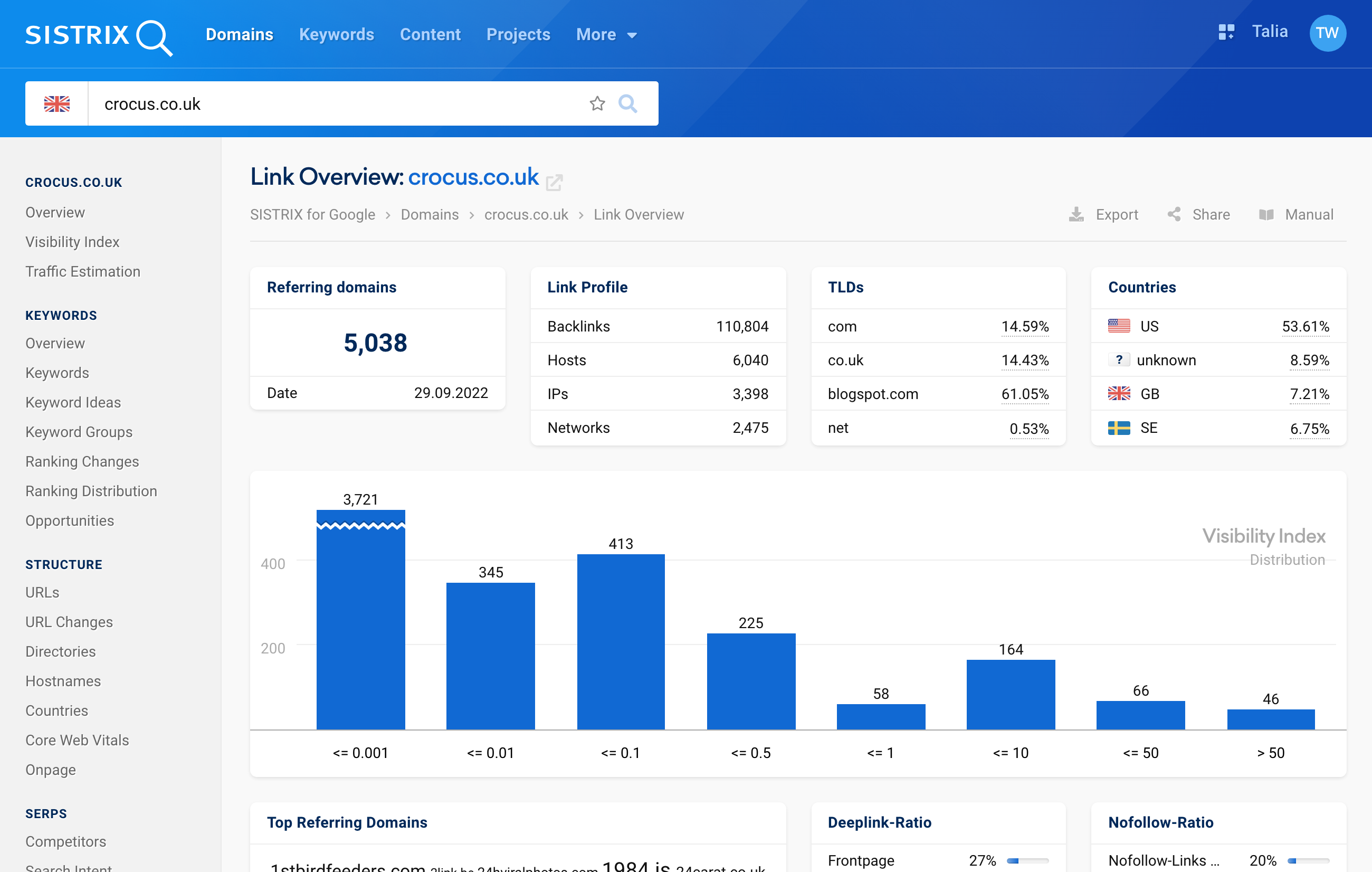
“Backlinks” refers to how many different domains link back to the evaluated domain. It is possible for 1,000 backlinks to come from one single domain, because every page of the domain links to a specific site. However, you should not assume that these links then also count thousandfold. A look at the referring domains (“Domain Pop”) can therefore prove to be useful. The metrics “IPs” (How many unique IP addresses link to the evaluated domain?) and “Networks” (In how many unique class C networks are these IP addresses located?) can also help you get a realistic impression, as links sometimes exist in specific networks that are likely to be devalued by Google.
Strategy #1: Broken Link Building
The easiest way to build links is to fix links that already exist. For example: Another website already links to your website, but the link is broken, typically resulting in a 404 error. Such links can easily be identified in the Link overview:
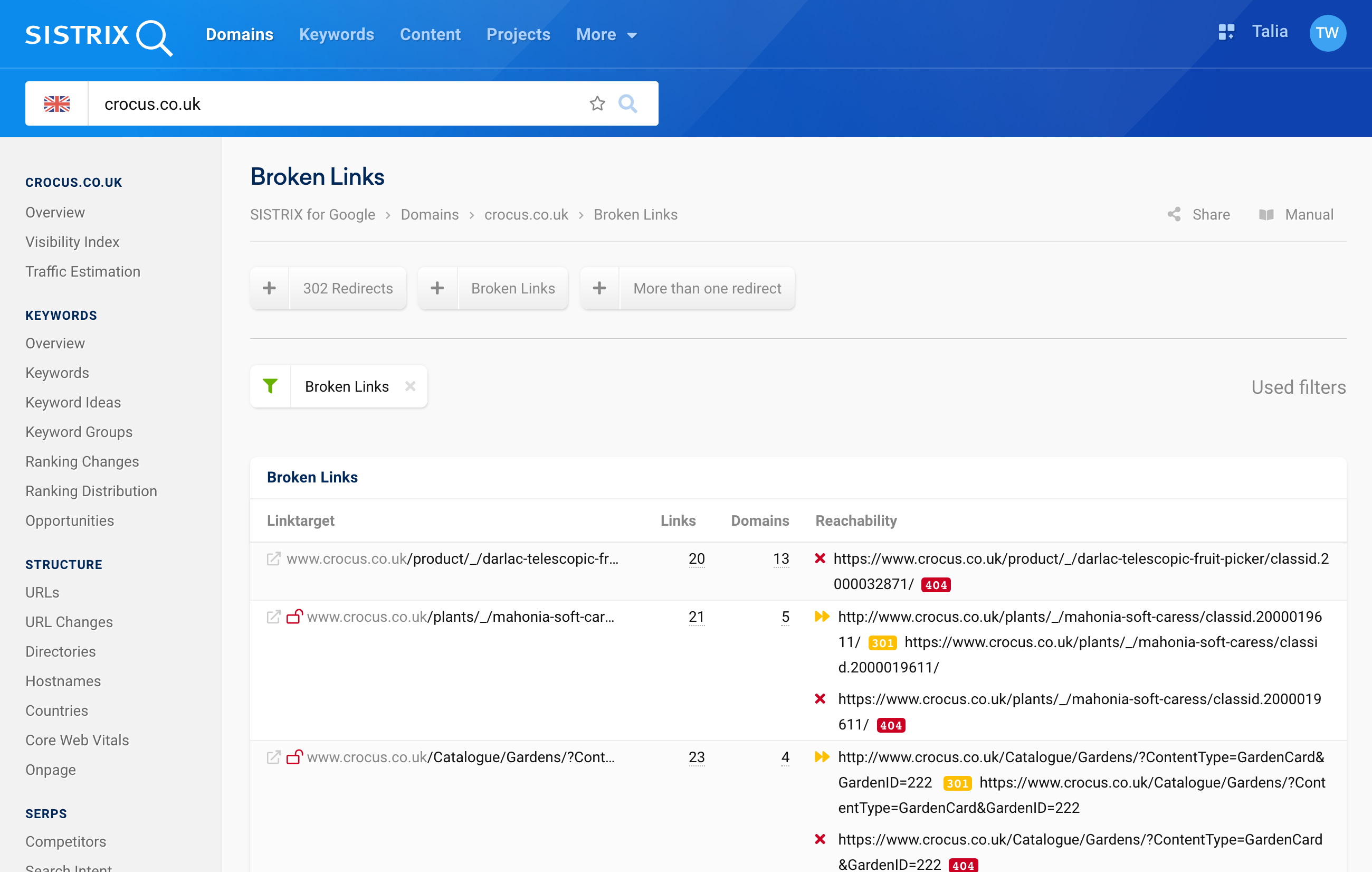
Afterwards, 301 redirects to other suitable pages should be set up for the respective links in order to “save” them. This analysis should be repeated several times a year because new backlinks can always break.
Strategy #2: Structured Potentials
The second strategy is considerably more complex, as it is not possible to simply redirect here. With structured potentials, you focus on specific kinds of links that are possible – but that require a little extra help to fully develop.
A look at the backlinks of stihl.co.uk shows a clear pattern. Various agricultural machinery companies – customers/partners of Stihl – link to the company’s website:
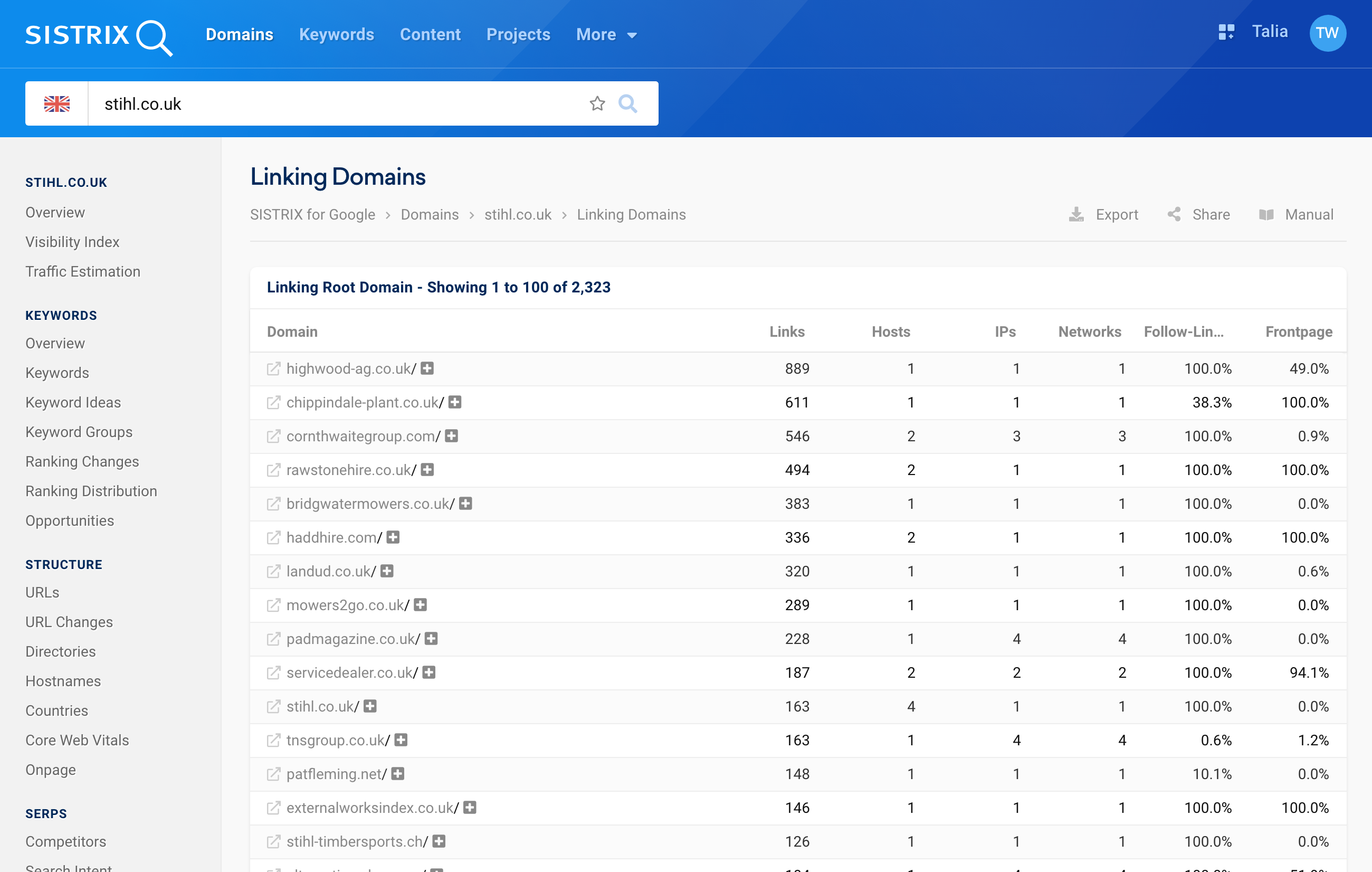
So, if Stihl discovers that they have 5,000 agricultural machinery companies in their file but only 500 of those link to them, they have quickly identified 4,500 potentials – companies where they can then use a lever, for example, via the sales force, so that they also link to stihl.co.uk.
If you want to make use of such structured potentials, you need to take a look at all your backlinks first and foremost, in order to recognise patterns there. Often links already exist here that you just have to “expand on”.
It can also be helpful to consider which companies, organisations, associations and other institutions you are connected to and then see if they have relevant websites where links would be worthwhile.
A few examples:
- Company X presents at career networking fairs 20 times a year to find new employees.
- Company X has cooperations with ten universities or chairs.
- Company X is a member of five important industry associations.
Ten links from chairs in particular can be very exciting in terms of external linking. Unfortunately, such “low hanging fruits” are often not used because the employees who are responsible for them internally do not recognise the value of the linking. Therefore, it is also very important to sensitise all employees to the topic of link building.
Strategy #3: Analyse Competitor Backlinks
The third strategy is to approach websites that already link to a competitor and request that they also link to your website. The following evaluation of the backlinks of umpcportal.com shows, for example, that there are link lists:
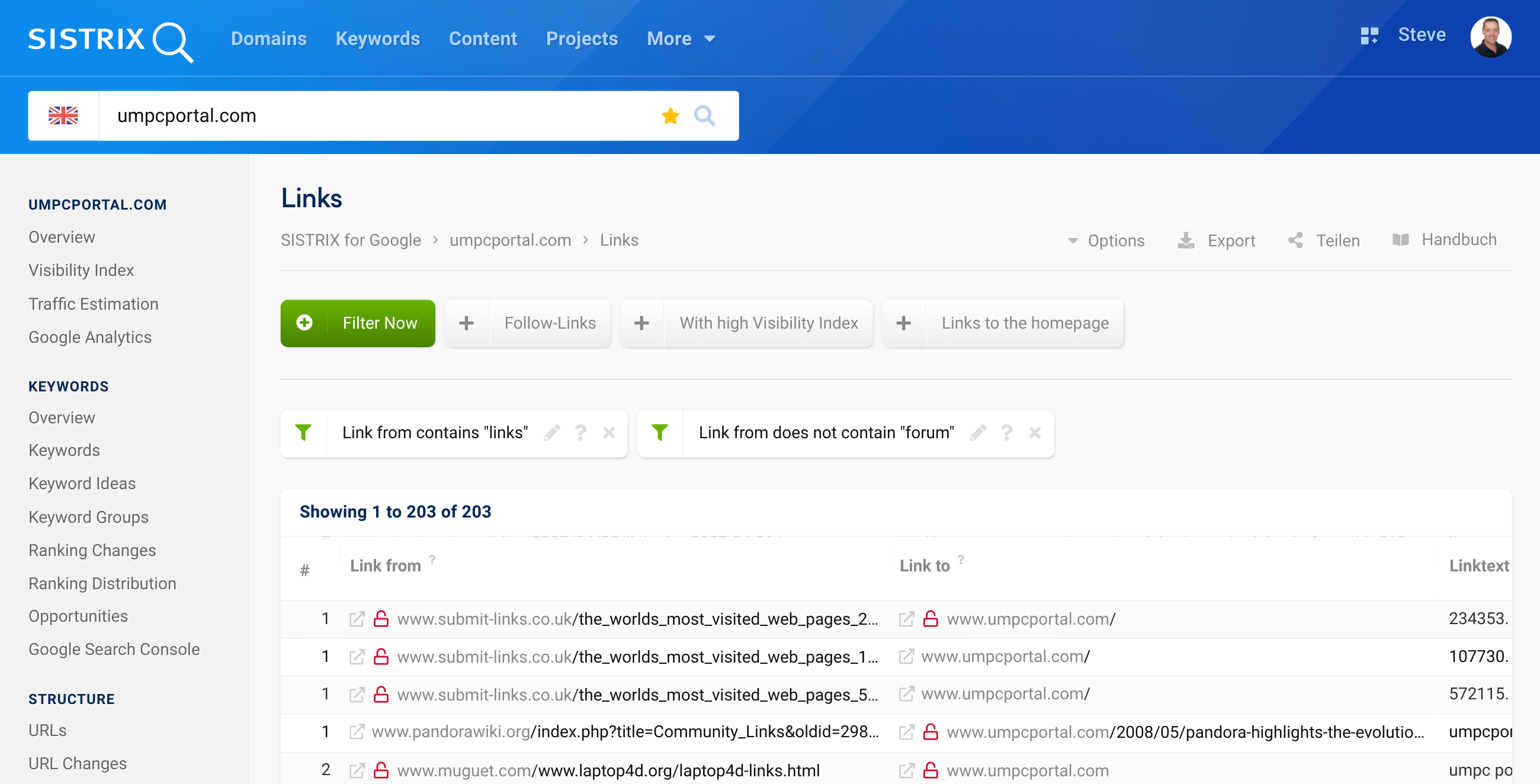
Even if such link pages are of minimal value, you can still try to request to be linked there as well. A small number of such links can be no problem.
Of course, you can also discover higher-quality backlinks while analysing the links of direct competitors. However, these are rarely pages where you can also request a link directly. At the very least, you can learn from the strategies that have led to links for your competitors. For example, if you see that a blog links to a competing website, you can also think about a blog link strategy.
Strategy #4: Link Building Through Content
The strategy of generating links through outstanding content should also be considered. A classic example of link building via content can be found here, for example:
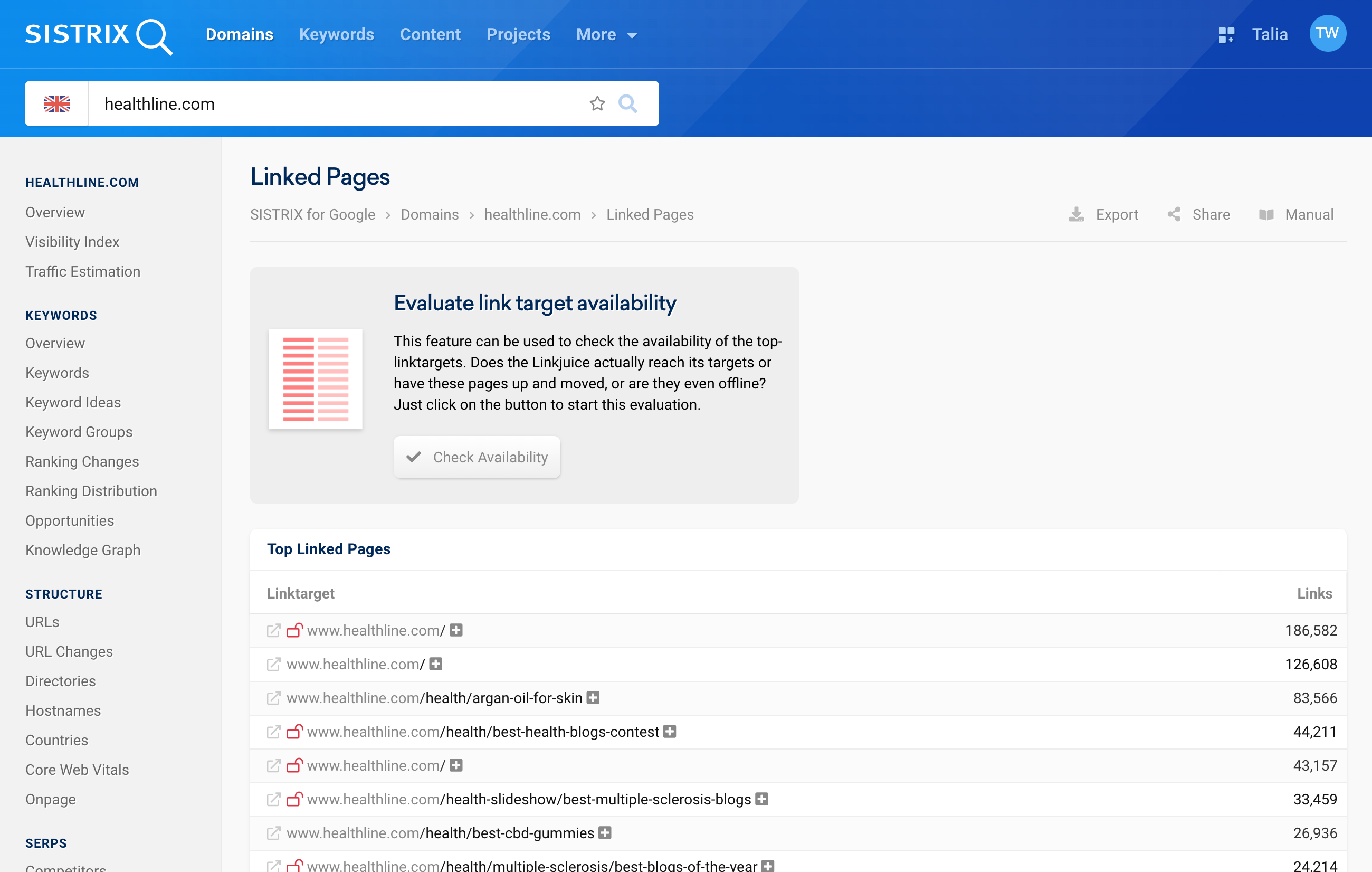
Here, it is important to find topics that are worth a link for a certain group of websites. Moreover, this group needs to be sufficiently large so that there is also great potential. An example for this is healthline.com with its informational article on argan oil. This is primarily linked to by beauty blogs and online shops – target groups that are evidently interested in the content:
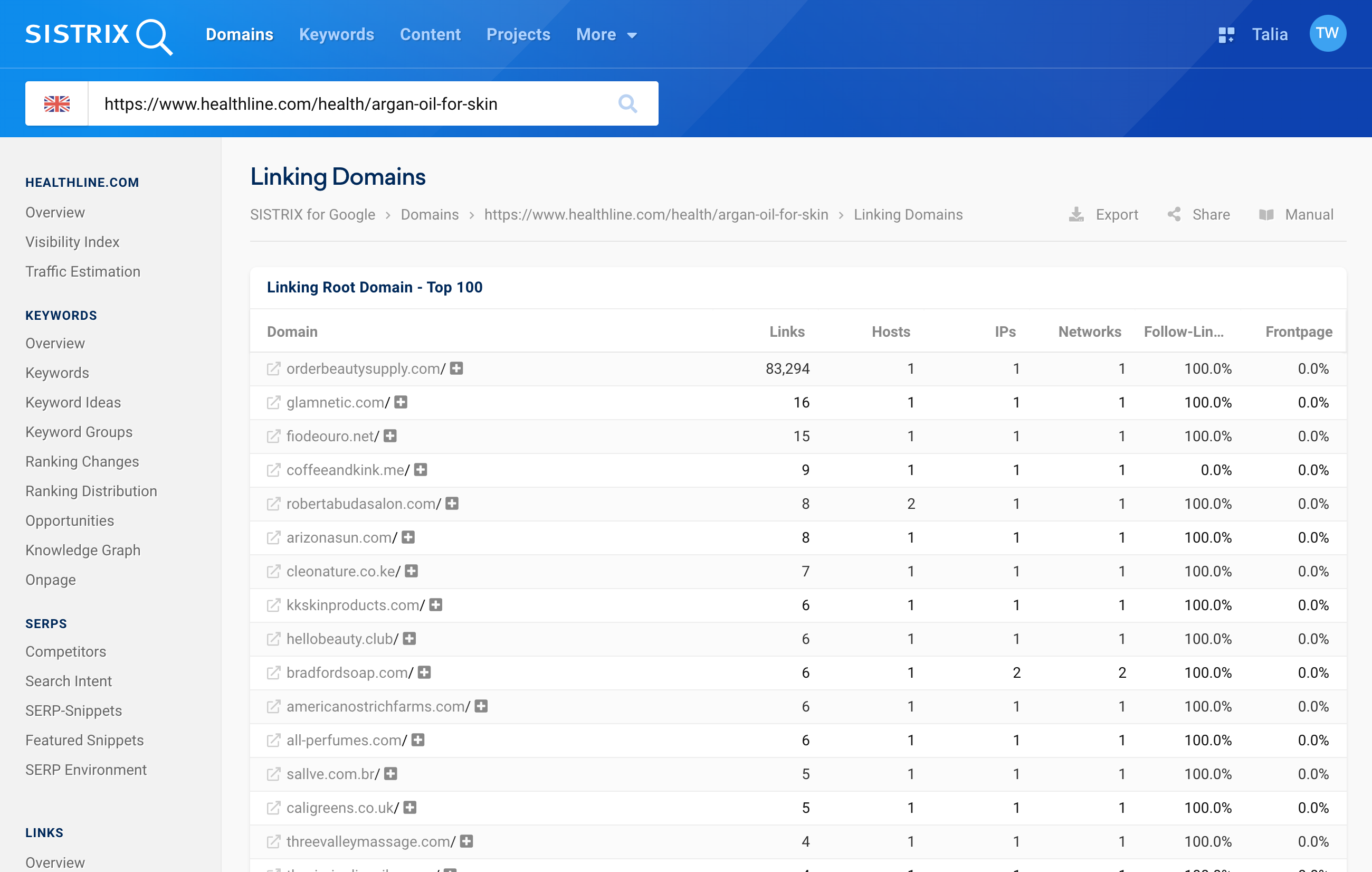
Link building through content is undoubtedly the ideal solution, because it enables outstanding and untouchable links. However, to achieve this, you need to mentally detach yourself from your products or services. An online fishing shop, for example, will hardly be able to generate relevant links with content about new fishing rods or landing nets.
You will have significantly better opportunities if you direct your focus towards the real problems and interests of customers – regardless of your own range of products and/or services. Here, you can also draw inspiration from competitors. For example, when analysing the top linked pages of fishfarmingexpert.com, we can see that a page on plant-based seafood alternatives in the U.S. led to many links:
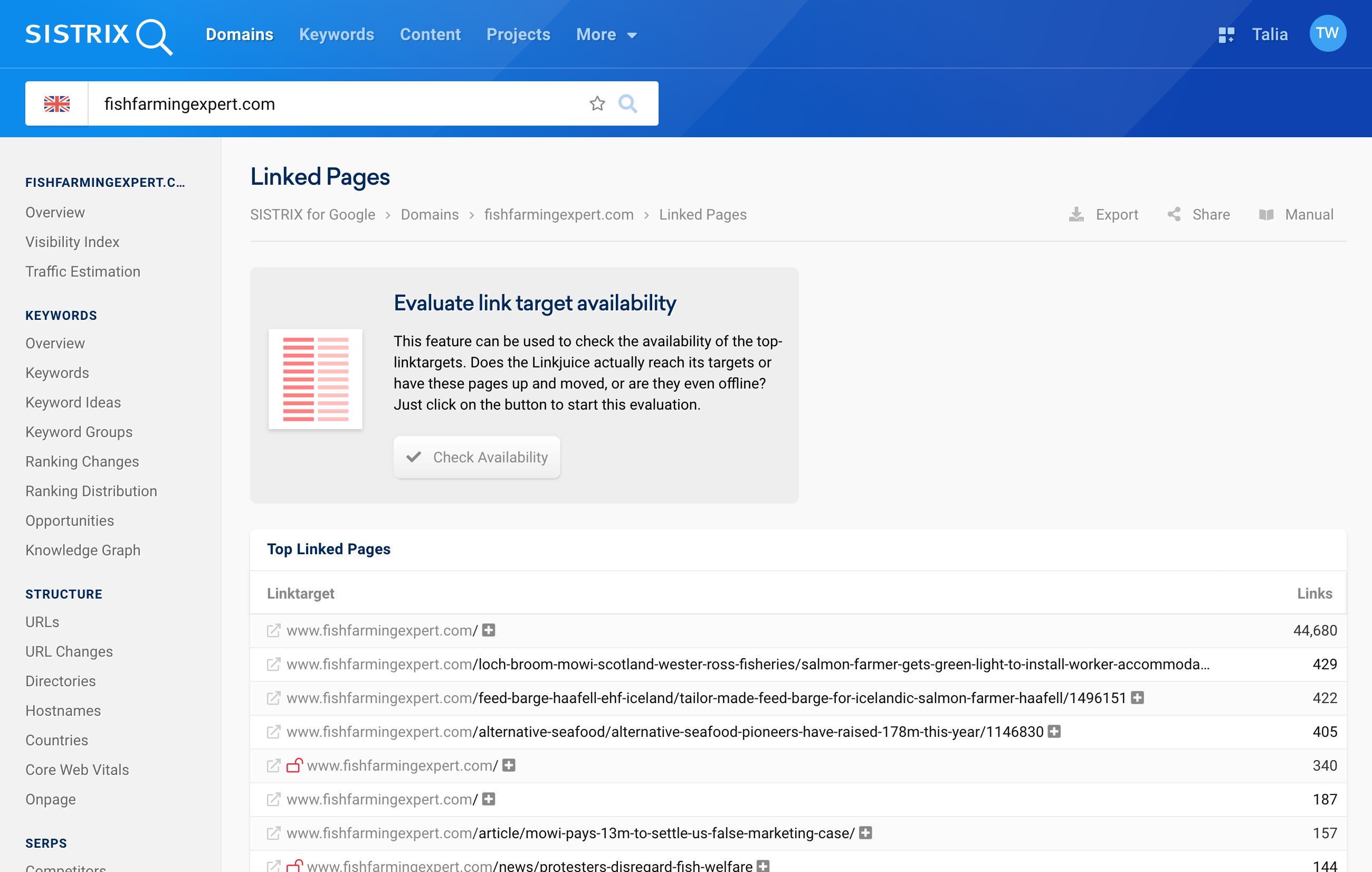
Here, the idea presents itself to set up a separate page for this topic with the current status of plant-based seafood alternatives – and not only for the U.S., but also for other relevant countries. This would also have two advantages: You could approach other seafood-related websites and offer them the content for linking. In addition, you can keep this content up to date and thus always have a starting point, e.g., to send out a press release with the latest changes.
Create Your Strategy Plan!
If you have read this far and think that this is all hard work: You’re right! In the past, many companies took “shortcuts” and relied primarily on paid backlinks, which were often of very poor quality. Since the Google Penguin update, this has become much less the case. Unfortunately, companies still rarely have a real strategic plan that is also rigorously implemented.
So, invest a lot of time in the initial research and set strategies for link building:
- See Strategy #1: How often do you check your external backlinks and then fix broken backlinks?
- See Strategy #2: Which structured link potentials does your company have? Who do you need in your company to identify and implement concrete potentials?
- See Strategy #3: Which competitors do you want to analyse regularly?
- See Strategy #4: With which content for which target groups do you want to generate particularly strong and untouchable backlinks?
For your strategy plan, it is also important to determine who actually implements this work, because the strategy of “we build links when we have time in the office” has never worked out very well.
The SEO Strategy Guide
Take the next step in this training program. This set of learning documents will help improve your SEO results and the way you use SISTRIX.
Link Building Strategy
What is the optimal strategy for the external backlinks to my website?
This guide was created in cooperation with Markus Hövener from Bloofusion. Your feedback is welcome.